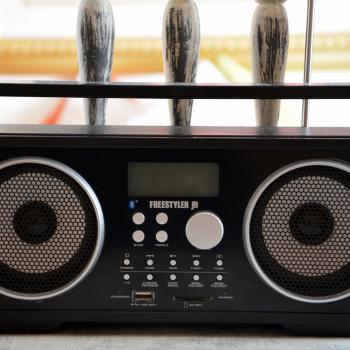The Islamic Year
Well, it took me a little over a week to finish this book, only because I’m currently reading two others (Nurture Shock and Skybreaker), running Camp Mommy (tm. Manic Mommies) and participating in the rest of my life. LOL. Here’s the review!
The Islamic Year: Surahs, Stories and Celebrations was written by Noorah Al-Gailani and Chris Smith. Noorah is an Iraqi Muslim who has been a religion teacher and at publication, was a curator of a religious museum in London. Upon doing a search on her name, this title is the only thing that surfaces.
Chris is a Musician and Storyteller from England who spent many years living in the Middle East and teaches about Arabic and Islamic culture in the UK. His name is so vague that a search brought up virtually no more information.
This book is written for the non-Muslim. It does not assume any previous knowledge about the religion or its customs and is written with the English-speaking reader as its audience. The story of the life of the Prophet Mohammed (PBUH) is told in brief, and while doing this, they explain the festivals that correspond with a particular event in the Prophet’s life. The festivals addressed are:
- The Prophet’s Birthday (Milad-an-Nabi)
- The Night of Destiny (Laylat-ul-Qadr)
- The Night Journey and Ascension (Al-Isra wa Al-Miraj)
- New Year (Hijrah)
- The Feast at the End of Ramadan (Eid-ul-Fitr)
- The Feast of Sacrifice (Eid-ul-Adha)
In each Chapter, the story of the Prophet Mohammed’s (PBUH) life is told as relates to the festival. They then cover why this particular event is significant and how it is celebrated in various countries. Not all countries are covered, but Iraqi customs are present in most chapters because of the author’s knowledge base. Egyptian, Syrian, Turkish and Palestinian customs are also mentioned in various chapters.
After the celebrations have been described, there are coordinating craft ideas described (like making a model Kabbah, a lantern, a mobile of all the prophets) in detail with material lists and illustrated instructions. There are many artistic renditions of the Angel Gabriel and Islamic Designs and flowers as well as the names of prophets like Moses, Jesus and Adam written in calligraphy. All of the 99 names of Allah are written in this book in English and in Arabic, so that you can make decorative bookmarks. recipes are included for Konafa with Cheese, Halva with Carrots and Honeyed Pancakes that sound similar to Ataif but without the frying.
The Crafts are followed up by several folktales that illustrate the coordinating theme of each holiday or festival. In the Appendices, the Festival of Ashura is explained as well as how the split between the Sunni and Shia’ sects came about, there is a glossary of terms, references for further reading, sources for crafting items (most in England), and a teacher’s guide for further instruction.
Basically it’s a really useful book for me. When I met my husband, Khaled, I asked him about the holidays and how to go about celebrating them. He told me that there were two holidays and the first holiday (Eid-ul-Fitr) we celebrate by getting new clothes and going to pray at the Masjid, the second (Eid-ul-Adha) we celebrate by sacrificing a lamb (or calf) in Egypt, and we go to the Eid Prayer at the Masjid.
As you can imagine, this proved very frustrating to me, who grew up with a truckload of commercialized holidays; Valentine’s Day(Cards and Chocolate), Easter(Colored Egg Hunt, Huge Baskets of Candy, New Clothes, Visits to Relatives), Memorial Day (Cookout), July 4th (Cookout and Fireworks), Labor Day (Telethon watching and Food), Halloween(Costumes and Candy), Thanksgiving (Large Amounts of Food and Family), Christmas(Cookies, Candy, Decorations, Tree, Dress Up Clothes, Presents, Visiting Family), and New Years Eve. This doesn’t even cover all the birthday parties, confirmation ceremonies, baptisms and other stuff I’ve left out.
What I’m saying here, is that I don’t know how to do low-key holidays. I don’t know how to not celebrate. So, once we had children, I kept trying to piece together some sort of celebration that incorporated his method of observing the holiday and my idea of what a holiday should be. I grew up here, in America, where we do it big or we don’t do it at all! LOL. So after many failed attempts, we’ve got a little bit of a routine down with the Eids, but I would like to take things up a notch. This book has introduced a way to add new traditions into our unique celebrations that won’t confuse the children when the holidays line up with Easter or Thanksgiving. I’m looking forward to making a Fasting Countdown and a Prophet Mobile this year.











